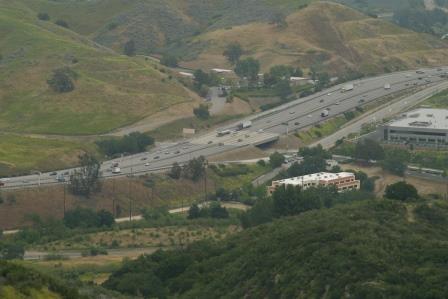Deaths highlight need for safe road crossings
You are viewing ARCHIVED content published online before January 20, 2025.
Please note that this content is NOT UPDATED, and links may not work. For current information,
visit https://www.nps.gov/aboutus/news/index.htm.

National Park Service
Contact: Kate Kuykendall, 805-370-2343 THOUSAND OAKS, Calif. – Three local mountain lion kittens have been fatally struck by vehicles in recent weeks, in two separate incidents. Roads pose one of the most significant challenges to the long-term survival of mountain lions in the Santa Monica Mountains and surrounding area. "Roads are a challenge not only because mountain lions keep getting hit and killed by cars, but also because major roads such as freeways lead to reduced genetic diversity and also higher rates of lion-on-lion conflict," said Dr. Seth Riley, an urban wildlife expert at Santa Monica Mountains National Recreation Area. "If we want to keep mountain lions in the Santa Monica Mountains, we need a better system of wildlife crossings." During the National Park Service's 12-year study in the Santa Monica Mountains and surrounding habitat, a total of 13 mountain lions have been struck and killed by vehicles. On January 20, a kitten estimated to be only a few months old was killed on Kanan Dume Road in Malibu. On January 31, two mountain lion kittens estimated to be 10 months old were killed on the 126 Freeway in northwest L.A. County, an area that is an important habitat connection for the Santa Monica Mountains. Because roads are a major barrier to movement, they also pose a more long-term threat to the survival of lions in the Santa Monica Mountains. Trapped on an island of habitat by freeways, the Pacific Ocean and the Oxnard agricultural plain, the mountain lion population population appears to be limited to 15 adults, far too few for long-term genetic or demographic viability. Another related cause of death for mountain lions in the area is lion-on-lion deaths, known to researchers as intra-specific conflict. Because roads limit movement, the normal dispersal pattern for younger males to evade larger males is disrupted and is likely contributing to a higher than average incidence of intra-specific deaths. National Park Service researchers believe that building a safe wildlife crossing near the Liberty Canyon exit along the 101 Freeway in Agoura Hills is critical for reducing the impacts of the area's extensive road network. Together with Caltrans, the Resource Conservation District and the Santa Monica Mountains Conservancy, they are working on a study to analyze a range of solutions, including a tunnel and an overpass. Known as a project study report, it is a critical first step for the project, but the major obstacle remains the estimated $10M price tag. Funding for mountain lion research in the Santa Monica Mountains is provided in part through private donations to the Santa Monica Mountains Fund. Santa Monica Mountains National Recreation Area (SMMNRA) is the largest urban national park in the country, encompassing more than 150,000 acres of mountains and coastline in Ventura and Los Angeles counties. It comprises a seamless network of local, state and federal parks interwoven with private lands and communities. As one of only five Mediterranean ecosystems in the world, SMMNRA preserves the rich biological diversity of more than 450 animal species and 26 distinct plant communities. ### |
Last updated: November 1, 2018
